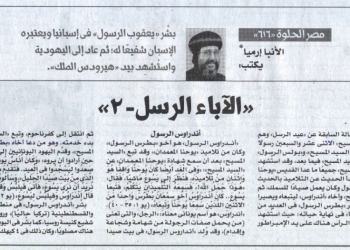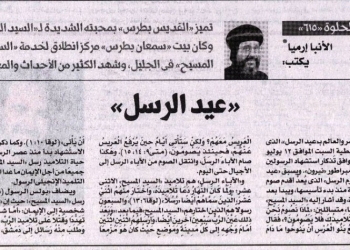In the previous article, we tackled the rulers of Egypt; Takin Ibn Abdullah Al Harbi during his first term, then the rule of Zakka al Rumi, whose death was followed by the second term of Takin’s rule over Egypt. Takin had fought with the armies of Al Mahdi, defeated him and seized his ships, so the forces fled to Upper Egypt. The war then was renewed again in 308 AH (920 AD) when Mo’nis Al Khadem, the minister of Caliph Al Muqtadir, came to Egypt with his armies from Iraq. Takin went to Giza again and sent his army to fight Al Mahdi’s troops at Al Ashmounin town, however, the commander of Takin’s armies died in Al Bahnasa town. Thus, the influence of Al Mahdi’s supporters increased in Fayoum, Ashmounin and several other areas. Takin was unable to confront them, so he received supplies from Iraq. Wars were raged in Fayoum and Alexandria, continued for a long time until Al Mahdi’s soldiers returned to Cyrenaica. In the meantime, news reached Takin that the son of Egypt’s judge, and some Egyptians support Al Mahdi. As a result, he arrested them, killed some and imprisoned others.
Ousting and Designation
The second Term of Takin’s of Egypt continued for almost a year and a half, as he was ousted in 309 AH (921 AD) by Mo’nis Al Khadem, who designated Abu Qaboos Mahmud bin Jamal as Egypt’s ruler instead of Takin but Abu Qaboos did not win the favor of Egypt’s soldiers, thus he stayed in Egypt’s rule for three days only! Historians state that a great sedition swept through the country when Mo’nis ousted Takin, the ruler of Egypt then, for no reason. Ibn alTaghri said: “The people and senior men of Egypt conversed with Mo’nis about the issue of Takin’s ousting, threatening him of the ousting consequences, and insisting on his return, so he acquiesced to them.” Thus, Takin returned to the rule of Egypt for a third time. However, Mo’nis was discontent at the return of Takin, so he won the support of the soldiers, and achieved what he had desired, getting everyone’s support. Hence, he ousted Takin promptly only four days after his return to power, and then Mo’nis expelled him out of Egypt to Syria together with some Arab soldiers lest a second sedition would be enraged. After these events, Mo’nis informed Caliph Al Muqtadir about what happened, and received orders to designate Hilal Ibn Badr over Egypt’s rule.
Hilal Ibn Badr (309-311 AH) (921-923 AD)
Hilal Ibn Badr took over Egypt’s rule after Takin had been ousted. Hilal came to Egypt carrying a message from the caliph to Mo’nis, commanding him to return with his soldiers to Baghdad. Indeed, Mo’nis left, accompanied by Abu Qaboos Mahmud bin Jamal.
This period had witnessed tremendous turmoil in the country. Then some of the people, together with the soldiers, agreed to fight and kill Hilal. They went from Misr Al Qadima to Moniyat Al-Asbagh (Hada’ek Al Qoba currently). The ruler got prepared to fight them, gathering the rest of his soldiers, the war broke out in the country , lasted for a long time, causing Egypt’s conditions to worse, killing, loot and corruption to increase, as well as the crimes of banditry. Yet, Hilal was unable to prevent such incidents or to fix them, Ibn Al Taghri said: “Ibn Bilal was weaker than fixing Egypt’s conditions, as whenever he controlled something that broke out, another issue would happen suddenly”. Caliph Al Muqtadir ousted him after ruling for two years and a few days, which were described by historians as the most evil days, full of wars and sedition! Succeeding him in Egypt’s rule was Ahmed Ibn Kayghalagh… and … Stories about beautiful Egypt do not end!
The General Bishop
Head of the Coptic Orthodox Cultural Center


 العربية
العربية











